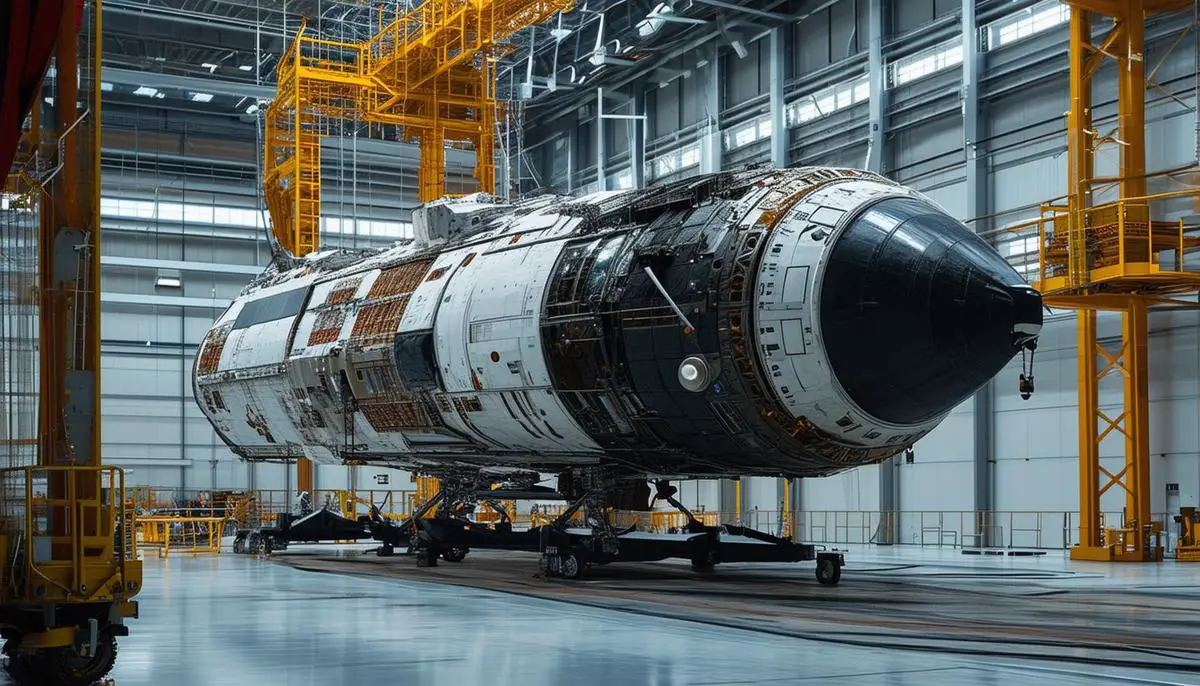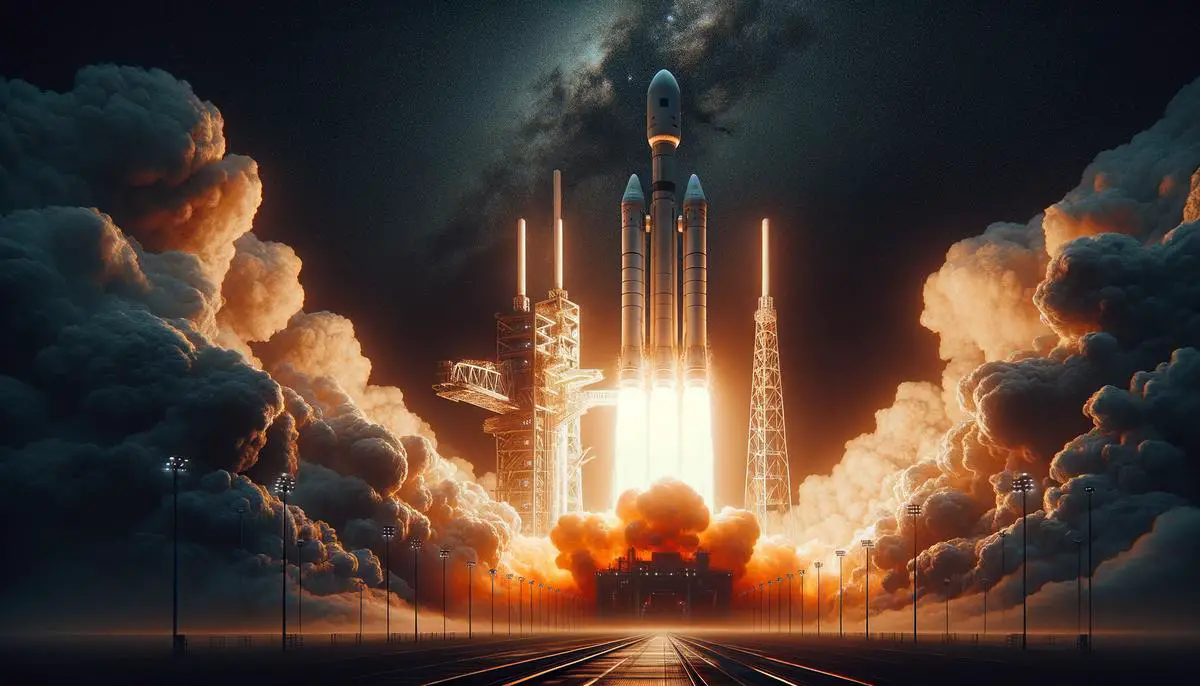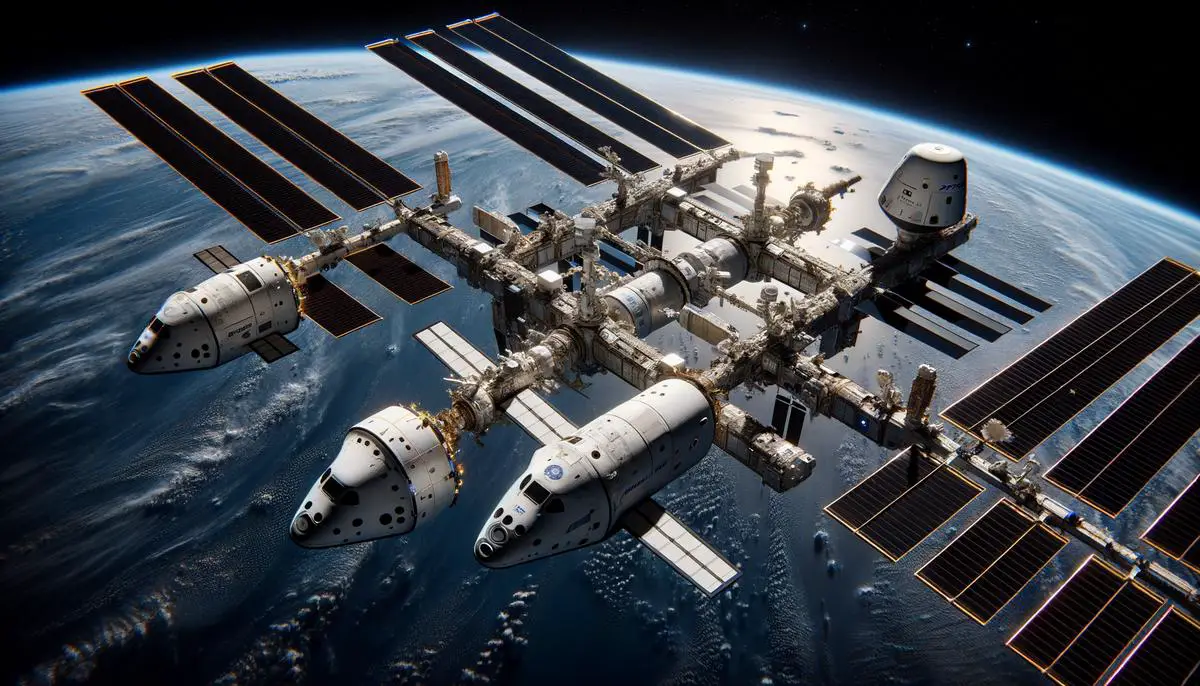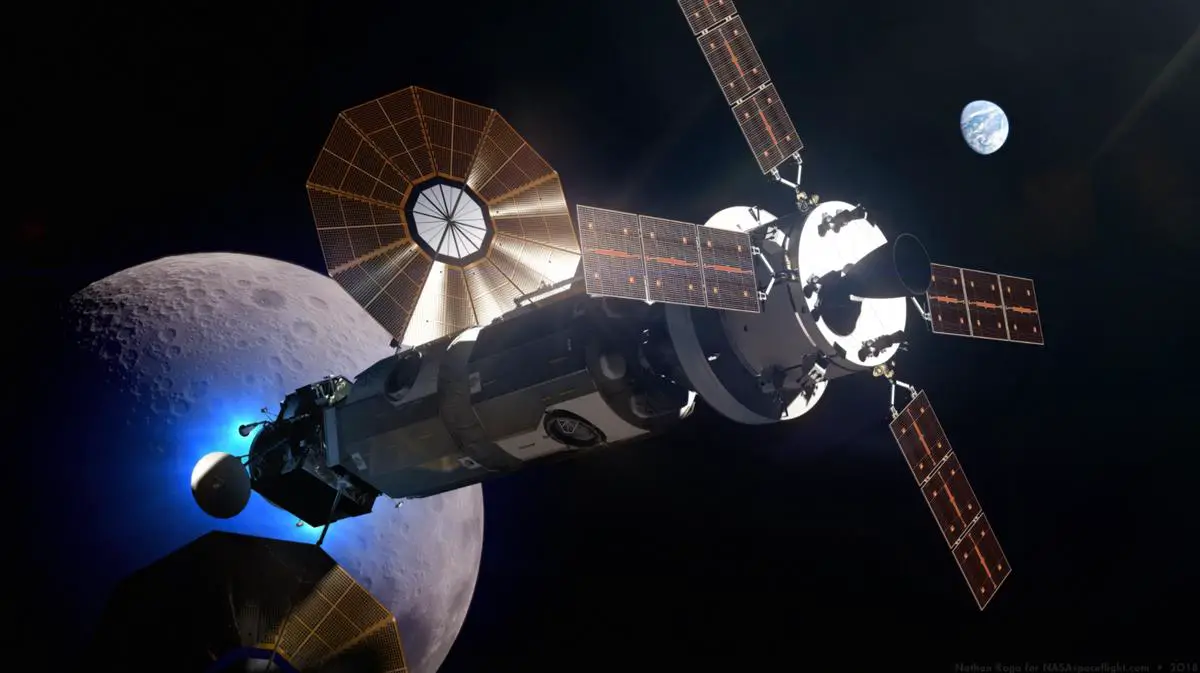Starliner Development History
Boeing's Starliner journey began as part of NASA's Commercial Crew Program, launched to address the transportation gap to the International Space Station (ISS) post-Space Shuttle era. In 2014, Boeing was tasked with building a spacecraft capable of shuttling astronauts, aiming to restore U.S.-based crewed missions. The Starliner, designed to carry up to seven crew members to low Earth orbit, was crafted with both flexibility and reusability in mind.
Initially projected for an expedited timeline, Starliner hit multiple roadblocks. Its first significant setback occurred during the uncrewed Orbital Flight Test (OFT) in December 2019. Here, critical software oversights prevented the spacecraft from achieving its intended orbit and docking with the ISS. Despite these shortcomings, Boeing managed to recover the vehicle safely at White Sands Missile Range.
Addressing the issues encountered during OFT-1, Boeing initiated a comprehensive review, identifying more than 80 necessary corrections. These ranged from software patches to management adjustments. The subsequent OFT-2 in May 2022 fared considerably better, successfully docking with the ISS and garnering positive feedback on its revamped systems.
However, the path to crewed missions remained fraught with challenges. Initially scheduled for 2023, Starliner's Crew Flight Test (CFT) faced postponements due to concerns over parachute reliability and the discovery of flammable tape on the capsule's wiring. These safety-critical issues required extensive re-evaluation and remediation.
As part of the Artemis program, Starliner occupies a crucial niche. The spacecraft aims to provide a robust backup to SpaceX's Crew Dragon. In the context of Artemis, Starliner ensures that NASA won't rely solely on one type of spacecraft for its ambitious lunar and other deep-space missions. With Artemis I marking a successful launch in November 2022 using the Boeing-built Space Launch System (SLS) core stage, Starliner is slated to play a pivotal role in upcoming missions. These missions aim to establish a sustainable human presence around and on the Moon.
Pending the success of its first crewed flight, Starliner will transition to operational crew rotation missions. The anticipated Starliner-1 mission, set for early 2025, will see the capsule ferry its first full crew to the ISS as part of NASA's continuous human presence strategy. This operational phase will bolster NASA's capacity, ensuring redundancy and enhancing mission objectives.
Boeing, despite being a seasoned aerospace contractor, had to traverse uncharted waters in spacecraft development, continually refining Starliner to meet stringent safety and performance standards. Drawing on lessons from their extensive portfolio, from leading Apollo missions to current Artemis efforts, Boeing is committed to addressing past missteps to pave the way for future success with Starliner.
NASA looks to Starliner not only as a vessel for transport but as an emblem of resilience and adaptation, ensuring that the Artemis missions can aim higher, backed by a reliable and tested complement of space vehicles.

Technical Challenges and Solutions
One of the more prominent technical hurdles Starliner faced was related to its software systems. During its inaugural uncrewed mission, the Orbital Flight Test in December 2019, a series of software glitches surfaced. These issues included:
- Incorrect timestamps
- Coding errors that caused the spacecraft to fail to achieve its planned orbit
- Prevention of docking with the ISS
The response from Boeing was rigorous. Engineers thoroughly reviewed the spacecraft's software architecture, leading to a comprehensive set of patches and updates. This thorough approach ensured that the software systems were reliable and capable of handling the intricacies inherent in space travel. The successful execution of these revisions became evident during the OFT-2 mission, where Starliner successfully completed all major objectives, including docking with the ISS.
Another critical issue arose with the spacecraft's parachute system. Initially, tests surfaced concerns over the parachute links, which were found to be weaker than anticipated. In response, Boeing implemented a series of rigorous tests and adjustments to the parachute deployment mechanisms. This included:
- Strengthening the materials used in the parachute lines
- Optimizing the deployment sequence to ensure a reliable and safe landing
These improvements were thoroughly validated through multiple testing phases, culminating in a successful demonstration during the OFT-2 mission.
Additionally, the discovery of flammable tape wrapped around the capsule's wiring presented a significant fire hazard, necessitating immediate action. The tape was identified during routine inspections as a potential risk due to its flammability, which could lead to devastating consequences in the event of an electrical failure. Boeing's engineers responded by replacing the wiring insulation with non-flammable materials and conducting extensive tests to ensure the integrity of the new setup. This all-encompassing review and rectification process established a higher safety standard for the spacecraft.
NASA's oversight also played a pivotal role in addressing these challenges. Initially, the oversight for Boeing's Starliner was less stringent compared to SpaceX, a discrepancy that NASA later acknowledged and rectified. Increased oversight included more frequent audits and collaborative assessments between NASA and Boeing, ensuring that all potential issues were identified and proactively addressed. This bilateral approach helped mitigate risks and fostered a culture of transparency and accountability critical for mission success.
As Starliner continues to prepare for its pivotal Crew Flight Test and subsequent operational missions, the implemented improvements stand as testament to Boeing's resilience and NASA's unwavering commitment to astronaut safety. The spacecraft is now better equipped to meet the demands of space travel, contributing to NASA's broader objectives under the Artemis program, which aims for continued exploration and sustainable habitation on the Moon and future journeys to Mars. By resolving these technical issues, Starliner is poised to become a cornerstone in NASA's fleet, ensuring that the journey to space remains reliable and secure.
Role in Artemis Missions
Within the ambitious framework of NASA's Artemis program, the Boeing Starliner has a pivotal role to play. The program, named after Apollo's twin sister, envisions a return to lunar exploration and establishing a sustainable human presence on and around the Moon. Starliner's contributions are integral in making these goals a reality, primarily focusing on crew transportation, but also extending its support to lunar mission logistics.
Foremost among Starliner's responsibilities is the safe and reliable transport of astronauts to the International Space Station (ISS). While SpaceX's Dragon has already been operational in this capacity, Starliner offers crucial redundancy that NASA deems essential. By providing a second, independent means of crew transport, Starliner ensures that the ISS remains continually staffed and operational, a critical foundation for any extended lunar endeavors. The experience and data gathered from these regular missions to the ISS feed directly into the broader Artemis mission objectives.
Looking to lunar missions, Starliner's design integrates lessons learned from its ISS operations, positioning it as a versatile component of the deep-space strategy. Though primarily an Earth-to-orbit vehicle, Starliner embodies technology and systems that align closely with those NASA plans to use in future lunar missions. This includes:
- Refined life support systems
- Advanced navigation capabilities
- Operational protocols that are vital for long-duration space travel
The integration of Starliner within the Artemis framework extends its utility beyond transport. It serves as an essential training platform for astronauts slated to partake in lunar missions. The systems and procedures developed for Starliner provide invaluable hands-on experience, ensuring that the astronauts who eventually voyage to the Moon are thoroughly prepared. The spacecraft's testing and operational flights contribute directly to refining techniques and technologies that will be critical when astronauts embark on lunar expeditions.
The concept of dissimilar redundancy here is significant. The Artemis program's timeline, involving multiple complex missions, benefits from having more than one operational crew vehicle. In urgent scenarios, such as unforeseen SpaceX Dragon launch delays or in-orbit spacecraft issues, Starliner stands as a reliable alternative. This availability supports immediate logistical needs and embeds deeper into the ethos of safety and operational flexibility that Artemis aspires to.
Starliner's role in supporting lunar missions goes beyond what meets the eye. Its capabilities to transport astronauts and cargo to the ISS serve as a preparatory and logistical stepping stone for more elaborate missions. The frequent trips between Earth and the ISS enable continuous testing and improvement of life support systems, autonomous docking maneuvers, and other critical subsystems in a real-space environment. These trials are indispensable in fine-tuning the technologies before deploying them for lunar missions.
Lastly, Starliner's potential extends to fostering commercial space endeavors. Its operational success under the Artemis rubric paves the way for broader commercial applications, further expanding human presence in low Earth orbit and potentially on lunar orbits in the future. These strategic alignments reinforce NASA's mission of sustainable exploration, gradually expanding human reach while ensuring technological and operational excellence.
Boeing's Starliner, through its strategic integration in the Artemis missions, fulfills vital roles in crew transportation, bolstering lunar mission preparations, and enhancing NASA's broader goal of sustainable lunar exploration. It stands as a symbol of human resilience, adaptability, and ambition, propelling humanity closer to uncovering the mysteries of the Moon and beyond.

Comparative Analysis with SpaceX's Dragon
While Boeing's Starliner and SpaceX's Dragon capsules are both crucial components in NASA's Commercial Crew Program and Artemis missions, they embody distinct design philosophies, performances, and mission roles that offer NASA versatility and redundancy.
Boeing's Starliner and SpaceX's Dragon were both designed to advance human spaceflight, but their designs reflect different priorities and approaches. Starliner, developed to transport up to seven crew members, can stay docked at the ISS for up to seven months, allowing flexible mission durations. Its interior, slightly more spacious than Dragon's, prioritizes crew comfort and operational practicality, integrating extensive lessons from Boeing's long legacy in aerospace.
Conversely, Dragon, designed initially for cargo and later modified for crew transport, offers a more compact interior but an efficient utilization of space. Dragon prioritizes reusability and rapid turnaround, having flown multiple successful missions with consistent performance. Notably, Dragon integrates an innovative touch-screen interface, which contrasts with the more traditional manual controls of Starliner. This distinction underlines SpaceX's commitment to integrating cutting-edge technology, fostering ease of use and streamlining operations.
Performance metrics further differentiate the two. Starliner, launched atop ULA's Atlas V rocket, has a launch system known for its reliability, but has encountered delays due to extensive safety upgrades and system overhauls, indicative of Boeing's cautious approach. Despite these delays, Starliner's enhanced safety features, such as strengthened parachutes and non-flammable wiring, reflect their high safety threshold.
Dragon, conversely, benefits greatly from SpaceX's Falcon 9 rocket, which has shown a remarkable success rate and cost-efficiency due to its reusability. Dragon's regular, reliable launches since its first crewed flight in 2020 have established it as a dependable workhorse for NASA, underscoring SpaceX's agility and iterative improvement processes.
In terms of mission roles, both capsules play complementary yet distinct parts in NASA's broader objectives. Starliner, carrying backup responsibility for crew transport, adds a critical layer of redundancy. This second crew vehicle ensures continuity of ISS operations, mitigating risks related to any single point of failure, a strategy NASA finds essential given past spaceflight contingencies.
Dragon's mission profile, well established through repeated flights, extends beyond ISS crew rotation. SpaceX's rapid cadence of launches, including missions for private companies such as Axiom Space, exemplifies its versatility and broader vision of space access, which includes commercial spaceflight.
Both capsules exhibit complementary roles within the Artemis program. Starliner provides a bedrock of tested systems essential for future lunar exploration missions. Its ability to offer astronaut training and system testing is invaluable as NASA refines techniques for Moon missions. Its independent launch capabilities from different pad infrastructures enhance mission flexibility and scheduling efficiency.
Dragon's high flight frequency and operational reliability serve as a benchmark for repeatable, scaled operations for NASA and potentially for more commercial enterprises aligning with Artemis's long-term goals. Experiences from Dragon missions contribute vital data on systems performance and human factors in space, essential for upcoming deep-space missions.
Starliner and Dragon manifest as complementary dual pillars of NASA's Commercial Crew Program. Both pioneering vehicles bridge strategic roles—Starliner ensuring resilient, redundant capabilities, and Dragon demonstrating swift, reliable access. Together, they fortify NASA's leap to sustainable lunar exploration under Artemis, each propelling humanity closer to new worlds by leveraging their distinctive strengths and lessons learned in pursuit of the cosmos.

In summary, Boeing's Starliner stands as a testament to resilience and adaptability. Through rigorous testing and improvements, it is poised to play a crucial role in NASA's Artemis missions. As we look forward to its operational phase, Starliner symbolizes technological achievement and the relentless pursuit of safe and reliable space exploration.
- Boeing. Starliner. Boeing. Accessed June 8, 2023.
- NASA. NASA's Commercial Crew Program. NASA. Accessed June 8, 2023.
- NASA. Artemis Program. NASA. Accessed June 8, 2023.
- SpaceX. Dragon. SpaceX. Accessed June 8, 2023.
![]()
